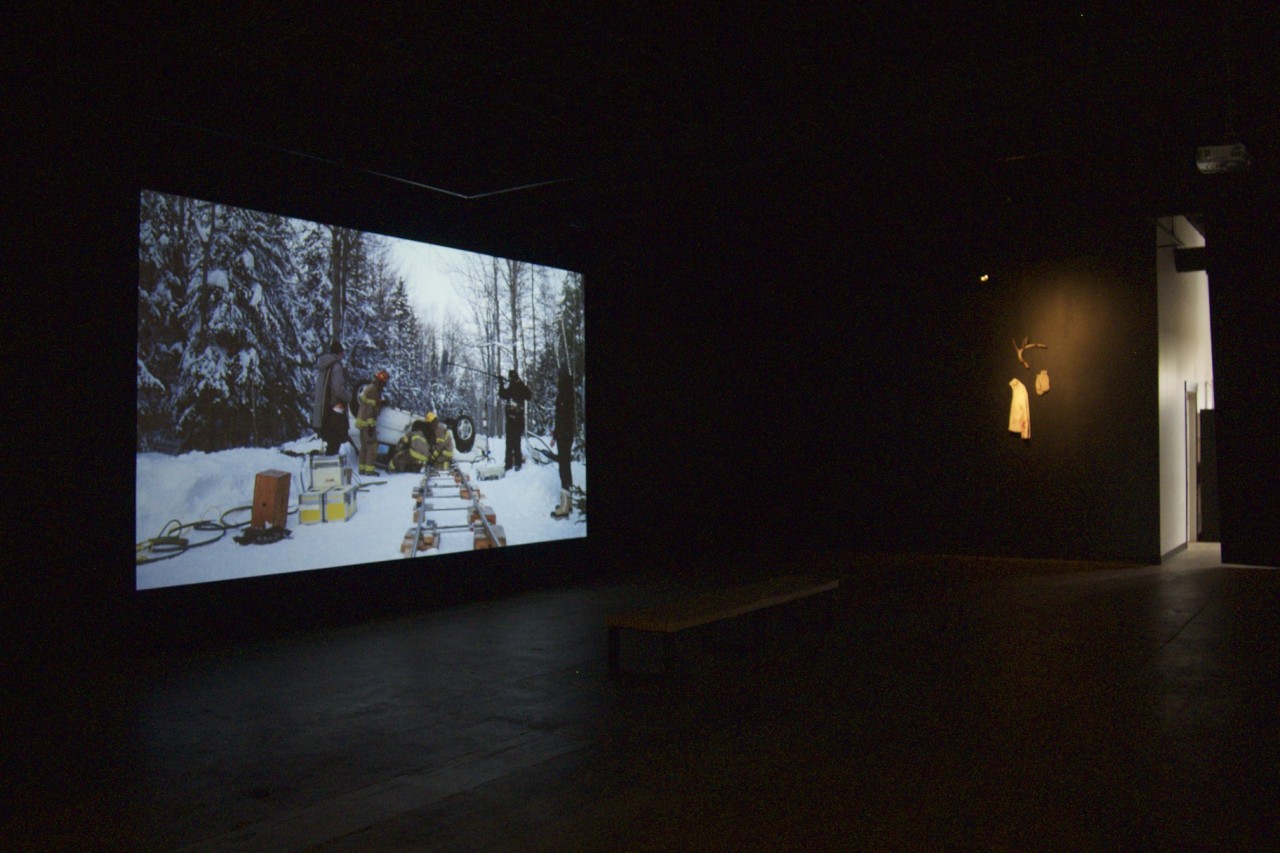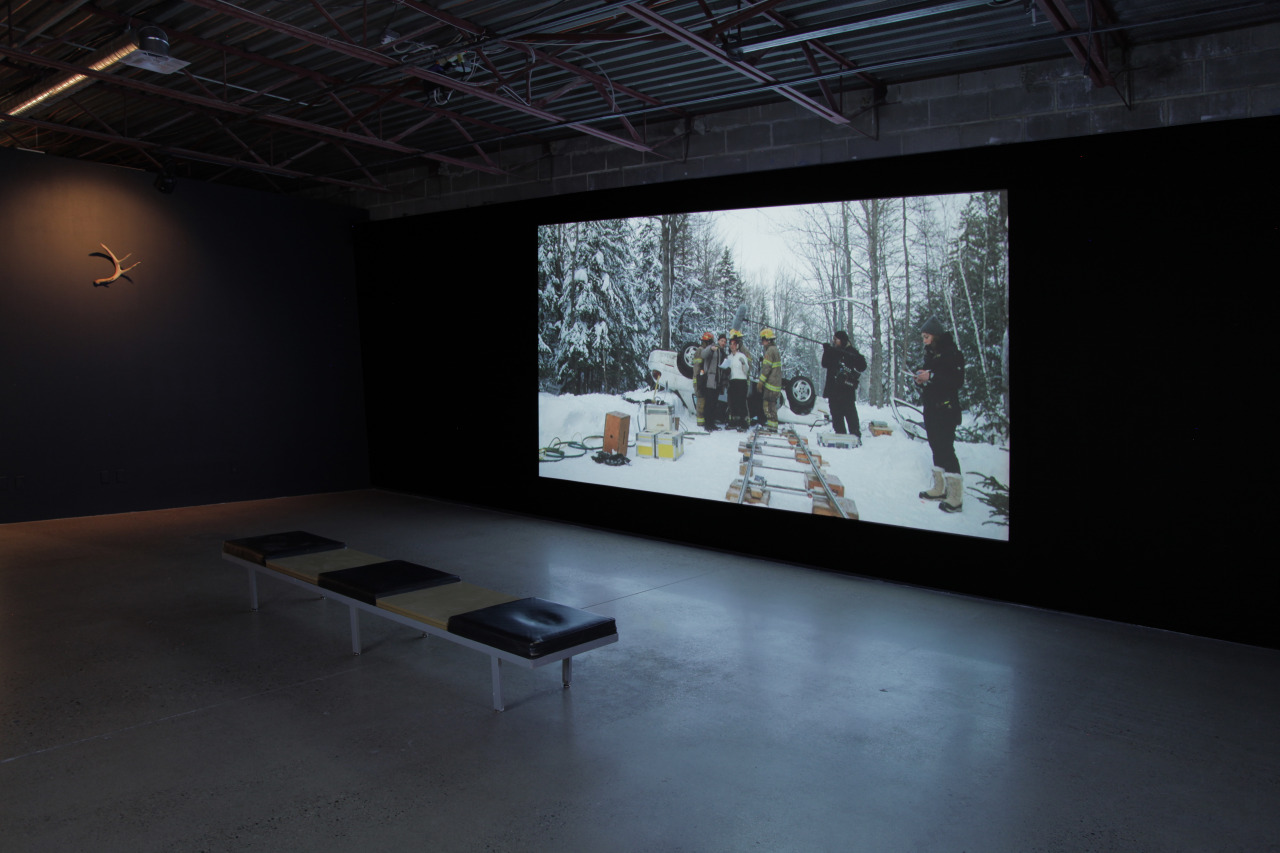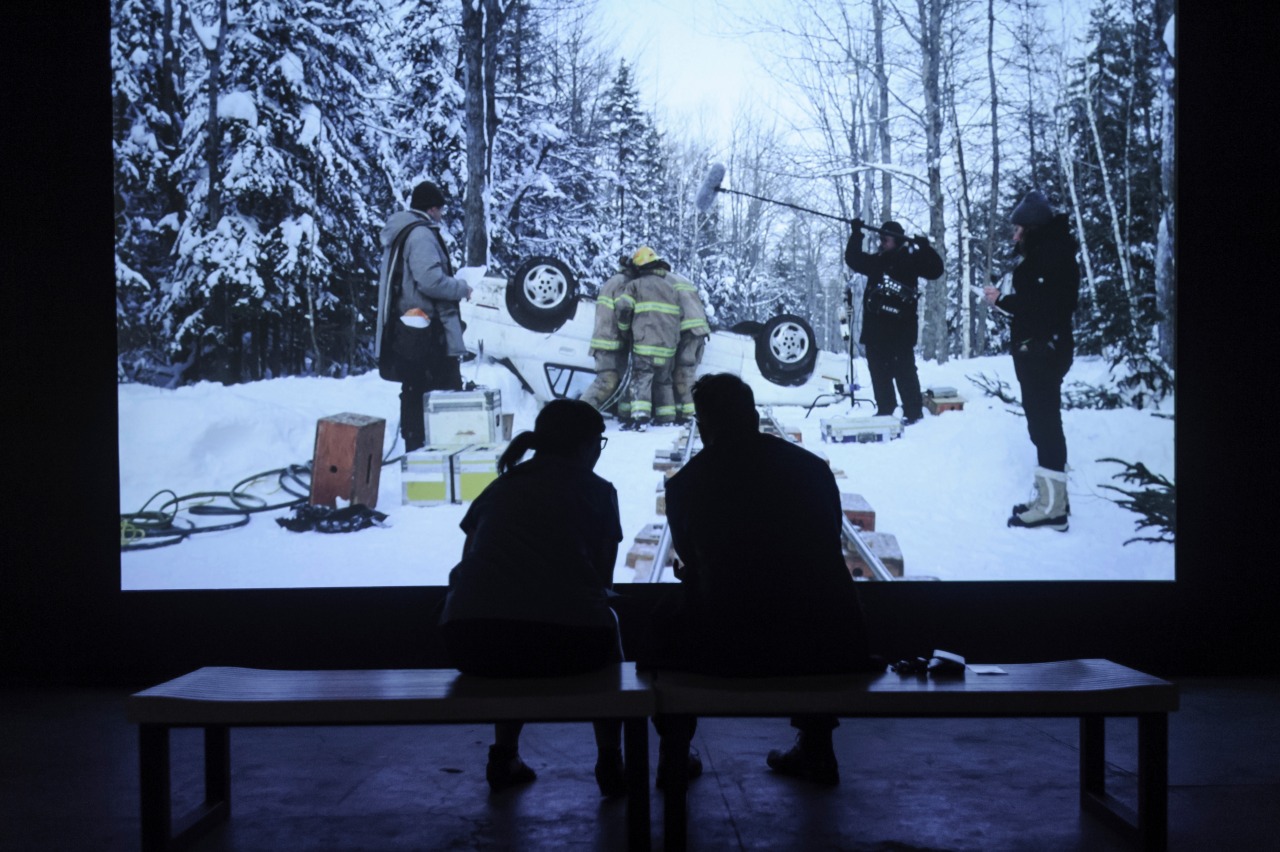Amanda Dawn Christie | Off Route 2
July 16 – August 29, 2015
Opening reception | Thursday, July 16 from 5 pm - 9 pm
Artist Talk | Saturday, July 18 at 2 pm
New Brunswick artist Amanda Dawn Christie used the classic cinema techniques of 35mm filmmaking to produce her work Off Route 2 for the gallery. The show carefully creates a cinematic portrayal of the aftermath of a car accident. The crash itself is never depicted—overturning expectations of the cinema and presenting an alternative that includes documents of its own construction, and an endurance performance by the artist who hangs upside down in below-freezing temperatures for hours as the metal around her is cut by an emergency response team.
Saturday July 18 at 2:00 pm: Join us for a behind-the-scenes look as Amanda Dawn Christie talks about her ways of working with the intersections of human bodies with analogue and digital technologies, and the ways she approaches making work for cinematic as well as gallery spaces.
Amanda Dawn Christie's Off Route 2 in a world made elsewhere
I keep thinking about the moment in Amanda Dawn Christie’s Off Route 2 when the camera pans out and the staging around the car accident in the snow-covered woods is revealed: the wounded victim (performed by the artist) emerges from the vehicle, the firefighters around her come into view as actors, the shot widens and we see the boom film crew. Accident victim becomes director as she explains the remaining shots she wants filmed, the monitors in the gallery on the opposite wall to the projection roughly lining up with her directive gestures.
Film has a long history of revealing the technologies and labours of its making, including the canonical Dziga Vertov film, Man with a Movie Camera (1929). Over the course of the larger story arc—moving through waking hours to sleeping nights of the humble, hard-working urban Russian proletariat—Vertov shows the filming, editing, and film screening process. In Vertov’s era of filmmaking, and really until the transition to digital editing software, filmmaking had a material process that required physical labour at each step, from the manufacture of celluloid to the lugging around of a heavy camera, to the fine task of cutting and reassembling film reel (whether with a knife or in an editing booth with knobs and buttons), to the careful threading of the finished product into the projector by a skilled projectionist. The ongoing shift from the physical, material act of filmmaking towards digital recording and editing means few devices aided by physical labour are left to reveal. As a result, the filmmaking process Christie reveals means something very different from Vertov’s due to our particular technological moment.
Critical theorist McKenzie Wark writes about going to a Maker’s Faire with his children in an essay entitled, “A More Lovingly Made World”. Reflecting on the demonstrations of knitting machines and Lego robots and bizarre forms of pedal power, Wark argues that the Faire is really demonstrating “an amateur culture and teaching culture that nibbles around the edges of a world that is made elsewhere... It is not about actual labour processes. The handicraft part depends on an industrial part that remains unseen. It’s a kind of fetishism.” Christie clearly directs our attention to fetish objects from of the film’s making through an installation choice: the deliberately lit sweater, mittens, and antler that hang high on the far black wall of the gallery are material souvenirs of the film production and thus worthy of this elevated display.
Few physical objects of the production process are left to keep hidden or to fetishize, thanks to software’s removal of the physical cut from film editing. The cutting of a filmstrip, a now arcane process, was a place where technology and culture met, and were mutually produced. With editing software there is no longer a specific object, or even a specific human gesture, to reveal. The click of finger on mouse or track pad to edit digital footage may be indistinguishable from many other gestures for many other computer activities. With software and apps, processes replace specific technologies and the skilled, unique physical actions required to use them. Looking at wild animals in nature and a person in distress in Off Route 2, all in a familiar but distant wintry moment, we experience the beautiful immersive experience possible with film. Christie’s choice to reveal the collective labour required to produce the film brings attention to the tools and people behind its making, but critically only at the filming stage—the stage that still requires distinct physical labours not yet absorbed by a computer program. Seeing the collision between body and technology in Off Route 2, however fictional, is a reminder of the shrinking number of objects from which distinct forms of labour and technology produce culture.
-
Carolyn Jervis is a local freelance art writer, curator, and cultural worker. In 2014 she completed a Master of Art History degree in Critical Curatorial Studies at the University of British Columbia in Vancouver. Her thesis exhibition and online catalogue, Welcome to Screenland, featured post-internet art explorations of feeling on and through internet and video game interfaces. Jervis has held curatorial and programming positions at a number of Edmonton art institutions over the past eight years, and curated an exhibition that toured across the country. She was the inaugural Writer-in Residence at Latitude 53, and has written numerous exhibition essays, as well as art criticism for Vue Weekly. Carolyn is currently the Exhibition Experience and Interpretation Coordinator at the Art Gallery of Alberta.




